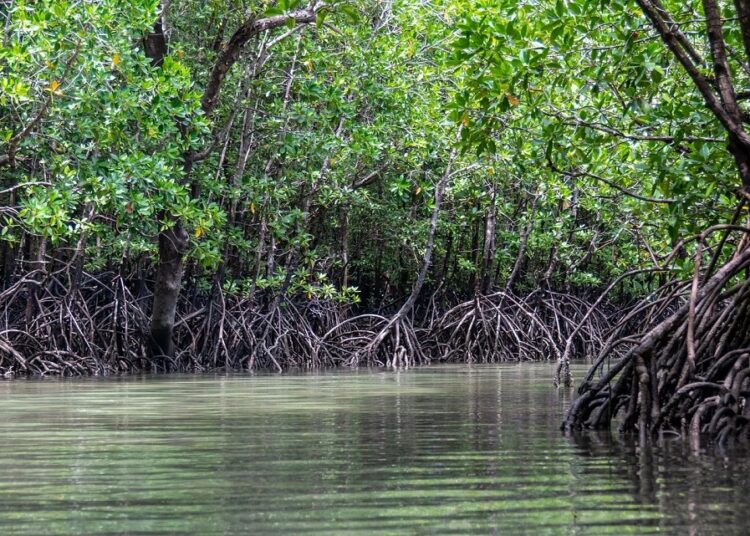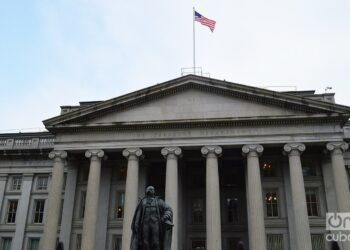Given its environmental potential, Cuba will enter carbon markets, confirmed Deputy Minister of Science, Technology, and Environment Rudy Montero.
A report published on the TTC (Travel Trade Caribbean) website, an international media outlet based in Italy with a correspondent on the island, stated that the decision was announced at the recent Hand-in-Hand Initiative agri-food trade forum organized in Havana by the Ministry of Agriculture and the UN Food and Agriculture Organization (FAO).
CLIPPING INFORMATIVO SEMANAL
️24-28 marzoProyecto “Mano de la mano” fomentará inversiones en la agroindustria
https://t.co/x5n85KrVr0Cuba, con enormes potencialidades para insertarse en el mercado de carbono
https://t.co/v2Fh5CZ0Ak pic.twitter.com/HLCvqxHHTY— FAO Cuba (@FAOCuba) March 28, 2025
The action was previously approved by the Cuban government on February 15, given that it represents a crucial opportunity for Cuba to contribute to climate change mitigation while generating income through carbon credits, given the conservation of its natural heritage.
Strategic framework for Cuban integration
According to Montero, the plan is based on priority lines focused on key sectors such as forests, waste, energy, and so-called “blue carbon.”
These areas have been selected due to their potential to reduce or eliminate greenhouse gas (GHG) emissions and generate tradable carbon credits.
Montero emphasized that this effort will be guided by sustainability criteria and explained that work will be done “based on a technical-methodological perspective, a regulatory perspective, and the design of specific business models.”
In addition, he highlighted that an enabling framework is already being developed that will integrate institutions and experts to rehabilitate the country’s ecosystems.
This approach seeks to align the international commitments established in the Nationally Determined Contribution (NDC), updated in February 2025.
Forest potential: an exemplary model
One of the fundamental pillars of Cuba’s plan is its forest management. Roberta de Souza, a carbon market finance specialist at the FAO, highlighted that Cuba has a negative deforestation rate, meaning it has increased its forest cover in recent years.
“Cuba is an exemplary model in the sustainable management of its forests,” stated De Souza. This achievement positions the island as a global leader in nature-based solutions to combat climate change.
REDD+ (Reducing Emissions from Deforestation and Forest Degradation) projects were identified as a key tool to monetize these advances.
According to De Souza, these projects will not only finance environmental initiatives but also attract international cooperation and technical support.
Blue carbon
Another outstanding aspect of Cuba’s potential for entering the carbon market is the potential for “blue carbon,” which encompasses marine-coastal ecosystems such as mangroves, seagrass beds, and coral reefs.
Kim Friedman, FAO Senior Fisheries Resources Officer, highlighted that Cuba is home to the largest mangrove forest in the Caribbean and possesses approximately 36% of the region’s ocean-connected coral reefs.
Friedman explained that these ecosystems not only capture large amounts of carbon but also provide additional benefits such as protection against flooding and sea level rise.
However, he cautioned that coastal habitats are underrepresented in global Nationally Determined Contributions (NDCs). “It is crucial to include these assets in national and international climate strategies,” the expert recommended.
He also mentioned that the blue carbon market is emerging as a promising opportunity. Initiatives such as the Colombian Vida Manglar project demonstrate how these credits can be certified and sold under international standards.
Global carbon market and Cuba’s assets
Carbon markets are trading schemes designed to provide financial incentives for reducing or eliminating GHG emissions.
According to World Bank statistics, there are currently 36 regulated markets covering more than 17% of global emissions, representing a significant opportunity for countries committed to sustainability.
In this context, Cuba meets the necessary requirements after updating its NDC 3.0. This document sets ambitious goals for the island, such as achieving a 49.3% share of renewable sources in electricity generation by 2035.
Of this percentage, 26% will be allocated to unconditional commitments under the NDC, while the remainder will be used to generate revenue through the carbon market.
Cuba’s entry into the global carbon market not only represents a significant economic opportunity but also a firm commitment to environmental sustainability.
With unique natural resources and innovative policies supported by international organizations such as the FAO and UNDP, Cuba is well positioned to become a key player in this emerging field.
Challenges and outlook
Despite the optimism generated by these initiatives, there are significant practical challenges. Friedman noted that harmonized methodologies are still needed to measure progress in areas such as blue carbon.
He also emphasized the importance of conducting detailed inventories of coastal assets and developing solid regulatory frameworks.
On the other hand, Montero acknowledged that this is a “challenging challenge” for the Cuban technical and scientific community. However, he expressed confidence that national capabilities combined with international support will overcome the obstacles.
According to the FAO’s Senior Fisheries Resources Officer, “the economic and environmental value of blue carbon could redefine traditional sources of global wealth.”
How carbon markets work
Carbon markets are financial tools designed to combat climate change by reducing greenhouse gas (GHG) emissions.
They operate through the purchase and sale of carbon credits. Each credit represents the reduction or elimination of one metric ton of carbon dioxide equivalent from the atmosphere.
Such credits can be generated by projects that reduce emissions, such as the installation of solar panels, or by initiatives that capture and store carbon, such as reforestation or the sustainable management of marine ecosystems.
Since the Earth’s atmosphere is only one, nations with outstanding environmental debts or environmentally unfriendly economic programs can purchase carbon credits from nations with emissions below mandated levels.
Examples include REDD+ (Reducing Emissions from Deforestation and Forest Degradation) project credits, which finance forest protection; renewable energy credits, which promote wind or solar projects; and energy efficiency credits, which bolster technological improvements.
There are also carbon capture credits, focused on carbon capture and storage projects. Each type is tailored to different emissions reduction initiatives, allowing companies and organizations to offset their carbon footprint.
Those that do not use all their credits can sell them to others who exceed their limits. This model seeks to incentivize progressive emissions reductions.
Criticisms
Criticisms of the carbon market often focus on the complexity and difficulty of ensuring the integrity of carbon credits, which can lead to double counting and lower-than-expected emissions reductions.
The insufficient participation of developing countries and the possibility of the market becoming a tool for greenwashing by highly polluting corporations are also criticized.
Furthermore, some argue that carbon markets can divert attention from the need for direct emissions reductions and the transition to renewable energy sources, so transparency and effective regulation are crucial to mitigate these criticisms.










